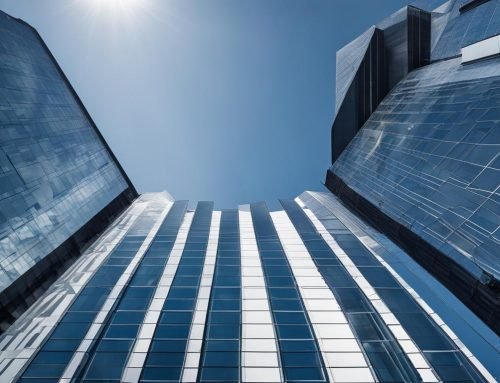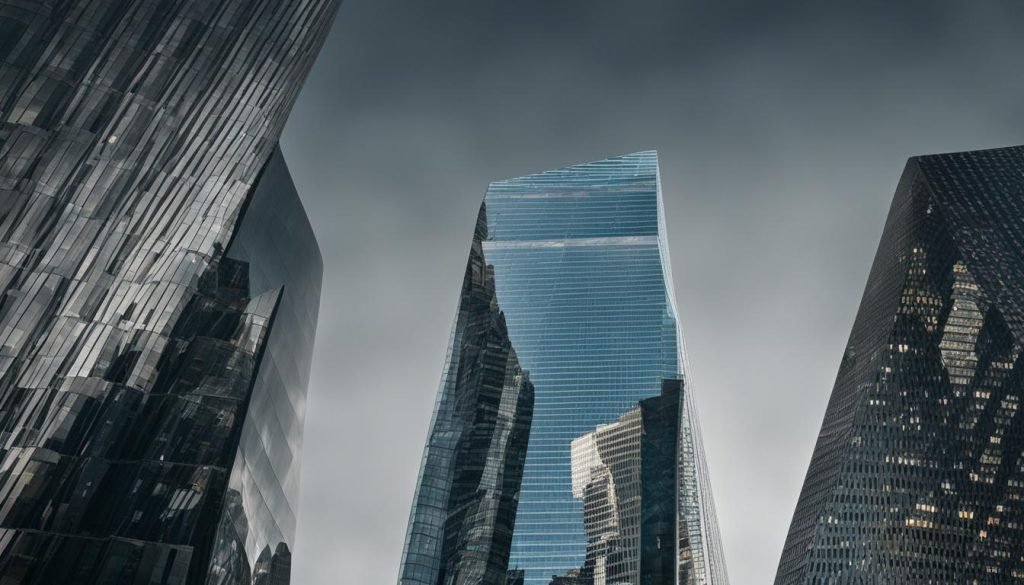
Architectural photography is an exciting and creative genre that allows you to capture the beauty and intricacy of buildings and structures. Whether you’re a beginner or looking to improve your skills, here are some essential tips to help you elevate your architectural photography game.
To excel in architectural photography, it’s important to understand the various techniques involved. This includes mastering composition, using appropriate lighting, selecting the right equipment, and optimizing camera settings. By familiarizing yourself with these techniques, you’ll be able to capture stunning architectural images that truly showcase the essence of the structures.
Key Takeaways:
- Mastering composition, lighting, equipment, and camera settings are crucial for architectural photography.
- Experiment with different angles and perspectives to add depth and interest to your shots.
- Aim to shoot during the golden hour for optimal lighting conditions.
- Invest in a sturdy tripod and wide-angle lens for high-quality architectural photographs.
- Post-processing techniques can enhance your architectural photographs and add your creative touch.
Understanding Architectural Photography Techniques
To excel in architectural photography, it’s important to understand the various techniques involved. This includes mastering composition, using appropriate lighting, selecting the right equipment, and optimizing camera settings. By familiarizing yourself with these techniques, you’ll be able to capture stunning architectural images that truly showcase the essence of the structures.
Mastering Composition
Composition plays a crucial role in capturing compelling architectural photographs. Consider elements such as lines, shapes, patterns, and symmetry to create visually appealing images. Experiment with different angles and perspectives to add depth and interest to your shots. Additionally, be mindful of distracting elements in the frame and strive for a clean and minimalistic composition.
Using Appropriate Lighting
Lighting is a key aspect of architectural photography. Optimal lighting conditions can greatly enhance the mood and aesthetics of your images. Aim to shoot during the golden hour, where the soft and warm light creates a beautiful ambiance. Additionally, consider using artificial lighting techniques such as light painting or bracketing to balance the exposure of indoor and outdoor elements.
Selecting the Right Equipment
Having the right equipment is essential for capturing high-quality architectural photographs. Invest in a sturdy tripod to ensure sharp images, especially in low light conditions. A wide-angle lens allows you to capture a wider field of view and emphasizes the grandeur of the structures. Additionally, consider using filters to control reflections and enhance color saturation.
Optimizing Camera Settings
Understanding and optimizing camera settings can significantly improve your architectural photographs. Shoot in RAW format to have maximum control over post-processing adjustments. Use a low ISO for minimal noise and a smaller aperture (higher f-number) to ensure maximum depth of field. Experiment with different shutter speeds to capture long exposures for creative effects or quick exposures to freeze motion.
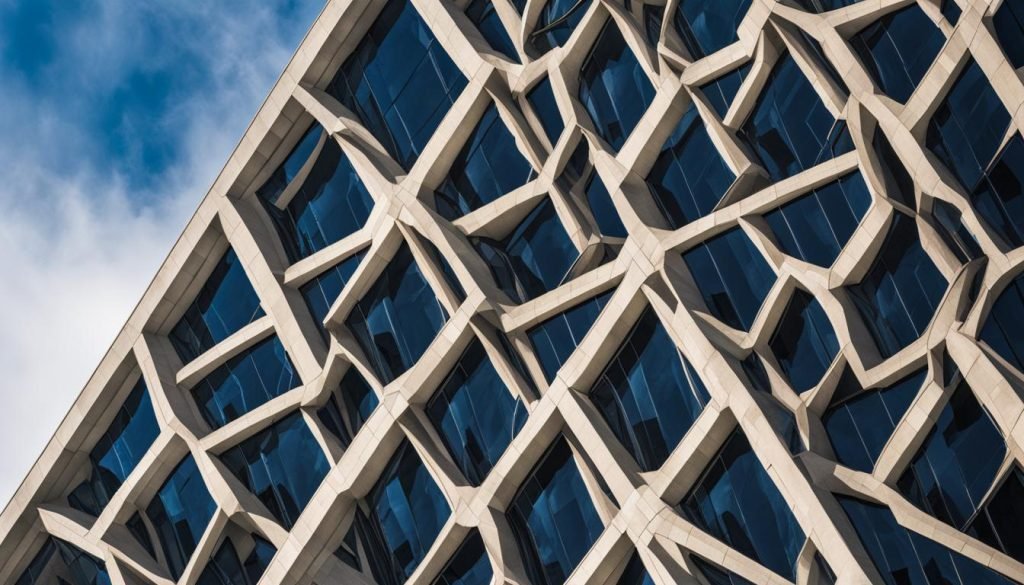
Composition Tips for Architectural Photography
When it comes to architectural photography, composition is key. It’s the art of arranging elements within your frame to create a visually appealing and well-balanced image. By considering the following composition tips, you can take your architectural photographs to the next level.
1. Pay Attention to Lines, Shapes, and Patterns
Architectural structures are filled with lines, shapes, and patterns that can add a sense of visual interest and depth to your photographs. Look for leading lines that draw the viewer’s eye into the frame and create a sense of perspective. Explore geometric shapes and repeating patterns that can create a harmonious composition. By incorporating these elements, you can capture the unique character of the architecture.
2. Experiment with Angles and Perspectives
Don’t be afraid to explore different angles and perspectives when photographing architecture. A change in elevation or shooting from low angles can dramatically alter the perception of height and scale in your images. Experiment with shooting from unique vantage points, such as rooftops or balconies, to capture a fresh perspective. By thinking outside the box, you can uncover new ways to showcase the beauty and grandeur of the structures.
3. Strive for a Clean and Minimalistic Composition
In architectural photography, less is often more. Aim for a clean and minimalistic composition by removing any distracting elements from the frame. Consider cropping out nearby buildings or trees that may detract from the main subject. By simplifying the composition, you can highlight the intricate details and architectural features of the structure.
Remember, composition is a personal choice, and there are no hard and fast rules. Allow your creative vision to guide you as you explore different composition techniques and experiment with unique angles. By mastering the art of composition, you can capture breathtaking architectural photographs that showcase the beauty and essence of the structures.
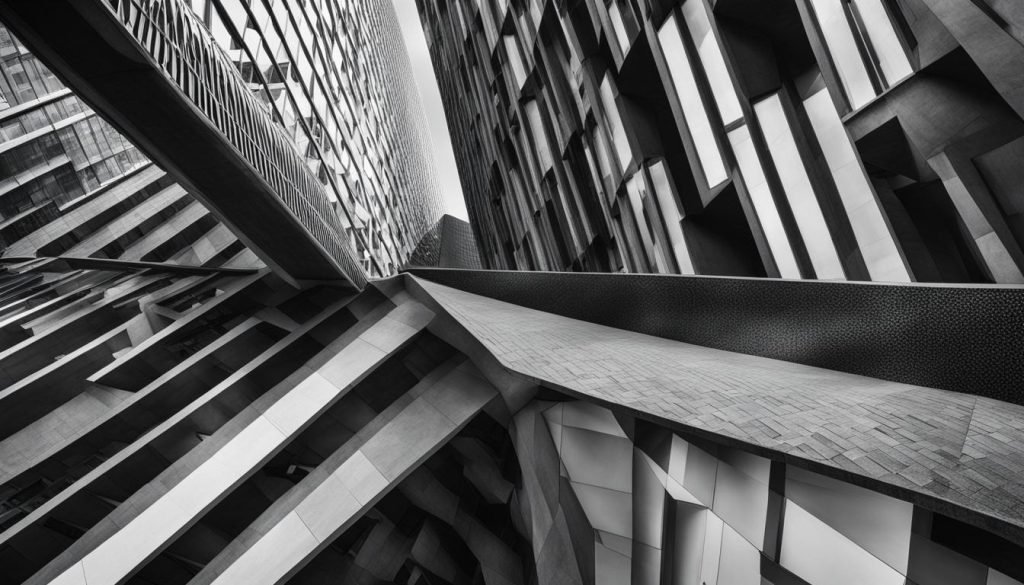
Mastering Lighting in Architectural Photography
Lighting plays a crucial role in capturing stunning architectural photographs. To make the most out of your shots, it’s important to understand how lighting can enhance the mood and aesthetics of your images. One effective technique is to shoot during the golden hour, which is the time shortly after sunrise or before sunset. During this period, the soft and warm natural light creates a beautiful ambiance, casting subtle shadows and adding depth to your photographs.
When shooting indoors, it’s essential to balance the exposure of indoor and outdoor elements. One technique to achieve this is bracketing. By capturing multiple exposures at different settings and blending them together in post-processing, you can ensure that both the interior and exterior details are properly exposed. Another artificial lighting technique to consider is light painting. This involves manually illuminating specific areas of your composition using a portable light source, such as a flashlight, to create dramatic effects and draw attention to architectural features.
Keeping Distractions at Bay
“Lighting is not only about illuminating the subject but also about directing the viewer’s attention. Be mindful of any distracting elements in your frame, such as wires, signs, or other structures. Sometimes, simple adjustments in your shooting angle or composition can help eliminate or minimize these distractions and ensure that the focus remains on the architectural subject.”
Additionally, consider the use of filters to further enhance your architectural images. A polarizing filter, for example, can help reduce glare and reflections from glass or water surfaces, allowing you to capture crisp and more vibrant photographs. Neutral density filters can also be useful for creating long exposures, especially when photographing architectural subjects in motion, such as water fountains or moving vehicles.
Remember, mastering lighting in architectural photography is all about experimentation and finding what works best for the specific subject and location. Don’t be afraid to play with different lighting conditions, both natural and artificial, to create captivating images that highlight the architectural beauty surrounding you.
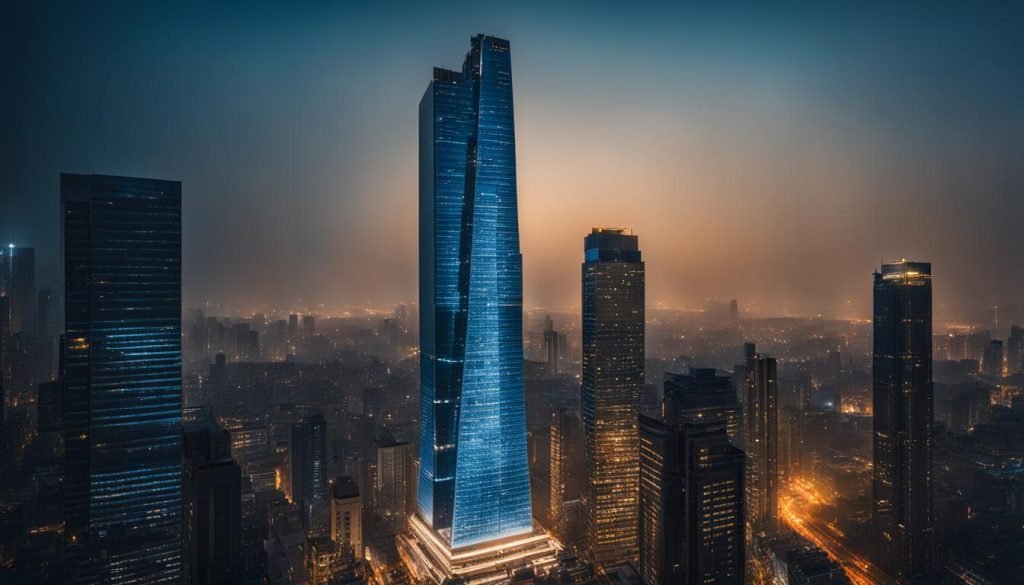
Essential Equipment for Architectural Photography
When it comes to architectural photography, having the right equipment can make a significant difference in the quality of your images. Here are some essential tools to consider adding to your photography gear:
- Sturdy Tripod: A sturdy tripod is a must-have for architectural photography. It provides stability and ensures sharp, blur-free images, especially when shooting in low light conditions or using longer exposures. Choose a tripod with adjustable legs and a sturdy ball head for maximum flexibility.
- Wide-Angle Lens: A wide-angle lens is ideal for capturing the grandeur and scale of architectural structures. It allows you to include more of the building in the frame and emphasizes its unique features. Look for a lens with a focal length between 14mm and 24mm for exceptional results.
- Filters: Filters can be indispensable tools for architectural photography. A polarizing filter helps reduce glare and reflections, enhancing the clarity and contrast of your images. Neutral density (ND) filters are useful for controlling exposure in bright lighting conditions, allowing you to achieve longer exposures for creative effects.
Additionally, consider investing in a remote shutter release to minimize camera shake, especially during longer exposures. This simple tool can make a significant difference in the sharpness of your images.
Remember, the choice of equipment ultimately depends on your individual shooting style and preferences. While these tools can greatly enhance your architectural photography, don’t forget that the most important aspect is your creative vision and the ability to capture the essence and beauty of the buildings and structures you photograph.
Example of Equipment for Architectural Photography
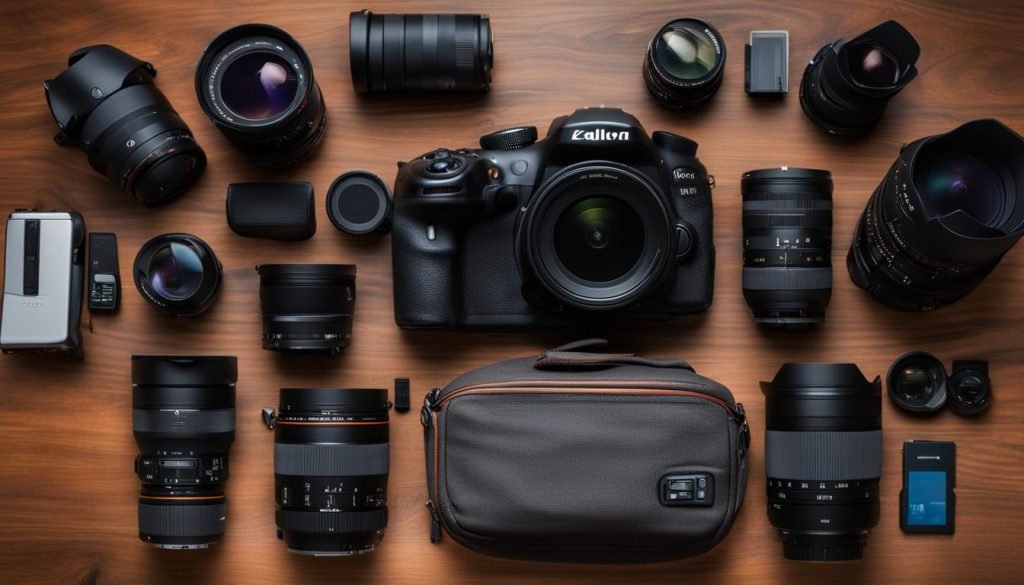
“Having the right equipment is essential for capturing stunning architectural photographs. A sturdy tripod, wide-angle lens, and filters are vital tools that can elevate your images to the next level.”
– Professional Architectural Photographer
Optimizing Camera Settings for Architectural Photography
Capturing stunning architectural photographs requires more than just finding the right composition and lighting. It also involves optimizing your camera settings to ensure that you capture the details and nuances of the structures. Here are some essential camera settings to consider for architectural photography:
- Shoot in RAW format: When shooting in RAW, you have greater flexibility in post-processing to adjust exposure, white balance, and other settings without compromising image quality. This allows you to bring out the best in your architectural photographs.
- Low ISO for minimal noise: Using a low ISO setting helps minimize noise in your images, resulting in crisp and clean photographs. Aim for an ISO value of 100 or lower to achieve optimal image quality.
- Smaller aperture for maximum depth of field: Select a higher f-number (smaller aperture) to maximize the depth of field in your architectural photographs. This ensures that both the foreground and background are in focus, capturing sharp details throughout the image.
- Experiment with shutter speeds: Explore different shutter speeds to capture various effects in your architectural photographs. Use longer exposures to create captivating light trails or capture the movement of people. Alternatively, use faster shutter speeds to freeze motion and capture precise details.
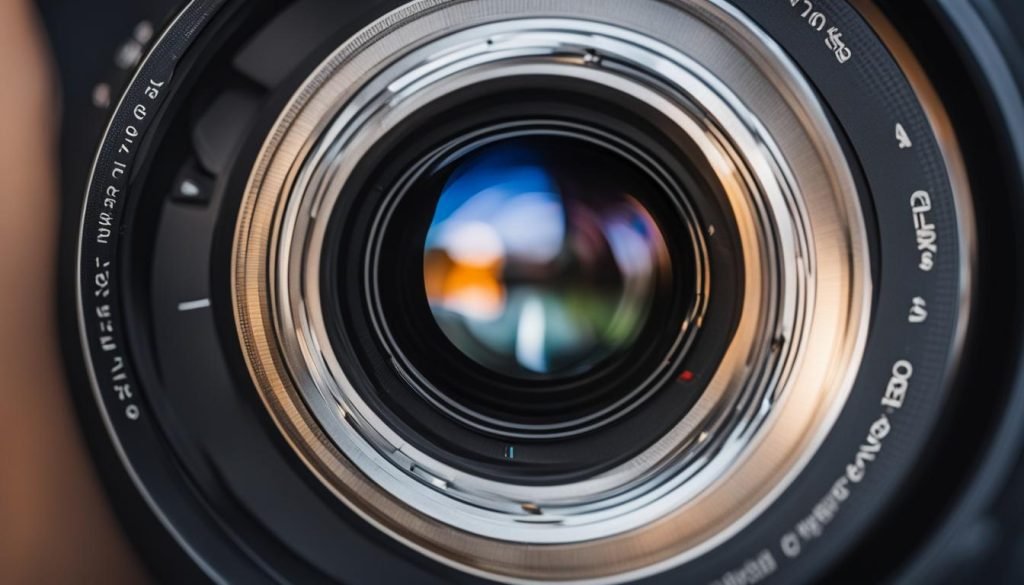
By optimizing these camera settings, you’ll be able to elevate your architectural photography and capture stunning images that showcase the beauty and intricacy of buildings and structures.
Exploring Different Angles in Architectural Photography
In architectural photography, capturing unique angles and perspectives can elevate your images and make them stand out. By experimenting with different viewpoints, you can create visually compelling photographs that showcase the beauty and intricacies of the architecture. Here are some tips to help you explore different angles in architectural photography:
- Moving around: Don’t restrict yourself to shooting from a single spot. Move around the building and explore different angles. This will allow you to discover new perspectives and compositions that highlight interesting details and elements.
- Changing your vantage point: Sometimes, a slight change in your vantage point can make a significant difference in your composition. Try shooting from a higher or lower angle to add depth and visual interest to your images.
- Capturing unique viewpoints: Look for unique viewpoints that offer a fresh perspective on the architecture. This could include shooting through windows, doors, or other architectural features to frame your subject in an interesting way.
- Playing with scale: Experiment with capturing architectural details in relation to the surrounding environment or incorporating people into the frame. This can help add scale and storytelling to your images.
Remember, there are no right or wrong angles in architectural photography. Let your creativity guide you and don’t be afraid to think outside the box. By exploring different angles, you can create striking images that captivate viewers and showcase the beauty of the architecture.
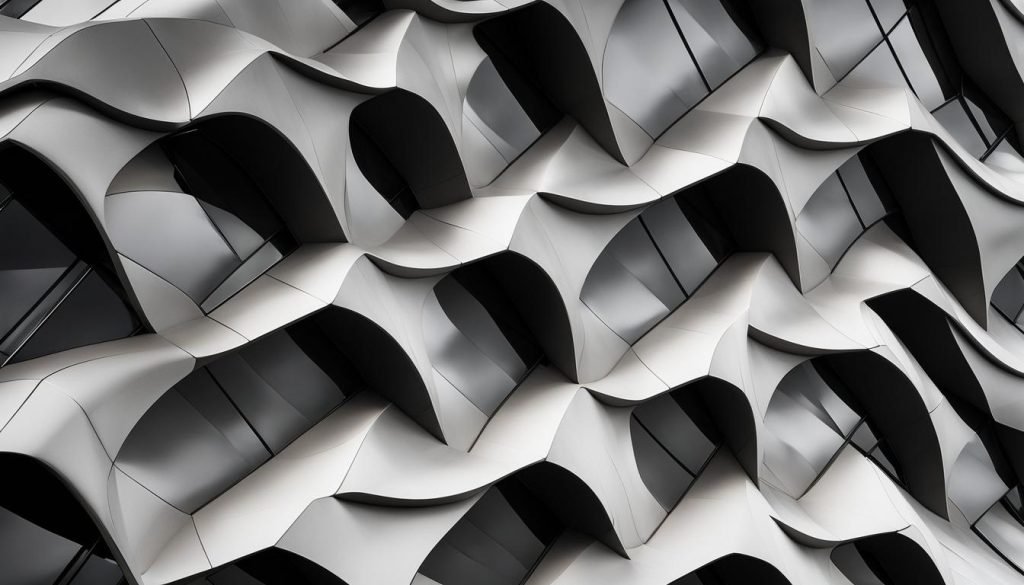
Post-Processing Techniques for Architectural Photography
Once you have captured your architectural photographs, it’s time to enhance them further through post-processing. This crucial step allows you to refine the exposure, color balance, and sharpness of your images, resulting in stunning final results. By utilizing post-processing techniques, you can bring out the true beauty of the architectural structures you have photographed.
To begin, import your raw image files into editing software such as Adobe Lightroom or Photoshop. These powerful tools provide a wide range of options for optimizing your architectural photographs. Start by adjusting the exposure to ensure proper brightness and contrast. Pay attention to highlight and shadow details to retain the intricacies of the architecture.
One important aspect of architectural photography is correcting perspective distortion. Buildings can appear distorted due to the nature of wide-angle lenses. Use the perspective correction tools available in editing software to straighten vertical lines and align the elements within the frame. This will result in a more aesthetically pleasing and accurate representation of the architecture.
“Post-processing allows you to fine-tune your architectural photographs, correcting any imperfections and enhancing the overall visual impact. Don’t be afraid to experiment with different styles and filters to add a unique touch to your images while maintaining the authenticity of the architecture.”
Removing unwanted elements
In architectural photography, it’s common to encounter unwanted elements such as people, vehicles, or signage that can distract from the main subject. Use the healing brush or clone stamp tools to carefully remove these distractions, ensuring a clean and uncluttered composition. Take care to blend the edited areas seamlessly with the surrounding architecture to maintain a natural look.
- Start with basic adjustments, such as exposure, contrast, and white balance.
- Utilize the perspective correction tools to correct any distortion.
- Experiment with different styles and filters to add a unique touch to your images.
- Remove distracting elements using the healing brush or clone stamp tools.
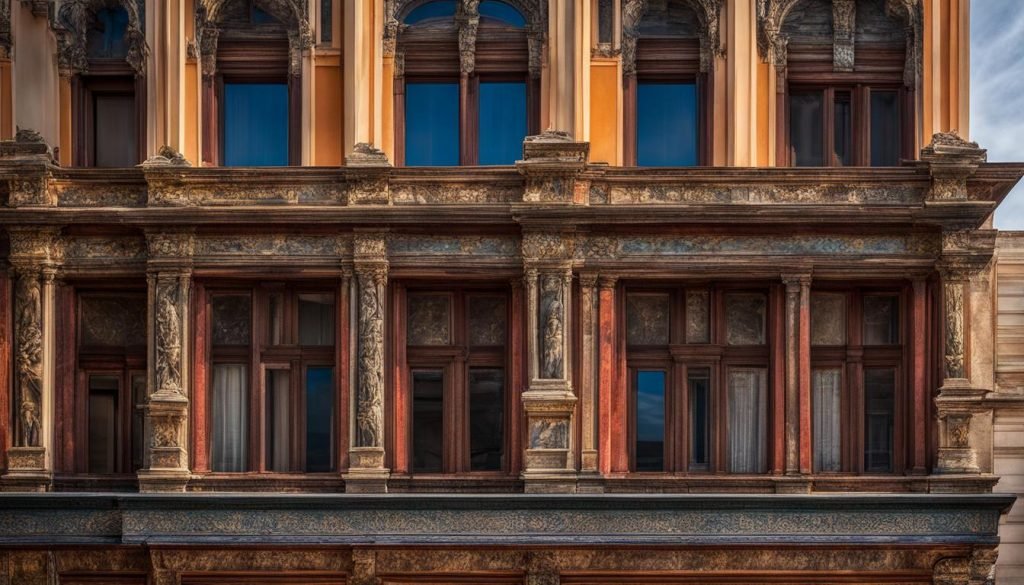
Unleashing Your Creativity: Architectural Photography Ideas
Architectural photography is an art form that allows you to capture the unique beauty and character of buildings and structures. To take your architectural photography to the next level and unleash your creativity, consider these ideas:
1. Explore Abstract Details:
Look beyond the complete structure and focus on capturing abstract details. Zoom in on intricate patterns, textures, or unique architectural elements that may go unnoticed at first glance. These close-up shots can create visually stunning and thought-provoking images that showcase the hidden beauty of the architecture.
2. Play with Reflections and Shadows:
Experiment with capturing interesting reflections and shadows created by the architectural elements and surrounding environment. Use water, glass, or other reflective surfaces to add depth and visual interest to your photographs. Play with shadows cast by the building’s design or the sun’s position to create dramatic and surreal effects.
3. Incorporate People:
Add a sense of scale and human connection to your architectural photographs by including people in your composition. Capture individuals interacting with or admiring the architecture to tell a story and add life to your images. Whether it’s a passerby, a curious visitor, or an architect enjoying their creation, including people can bring a dynamic element to your photographs.
Remember, architecture is constantly evolving, and each structure has its own story to tell. Don’t be afraid to think outside the box, experiment with different techniques, and explore your creative vision. Let the architecture inspire you, and capture stunning images that reflect your unique perspective.
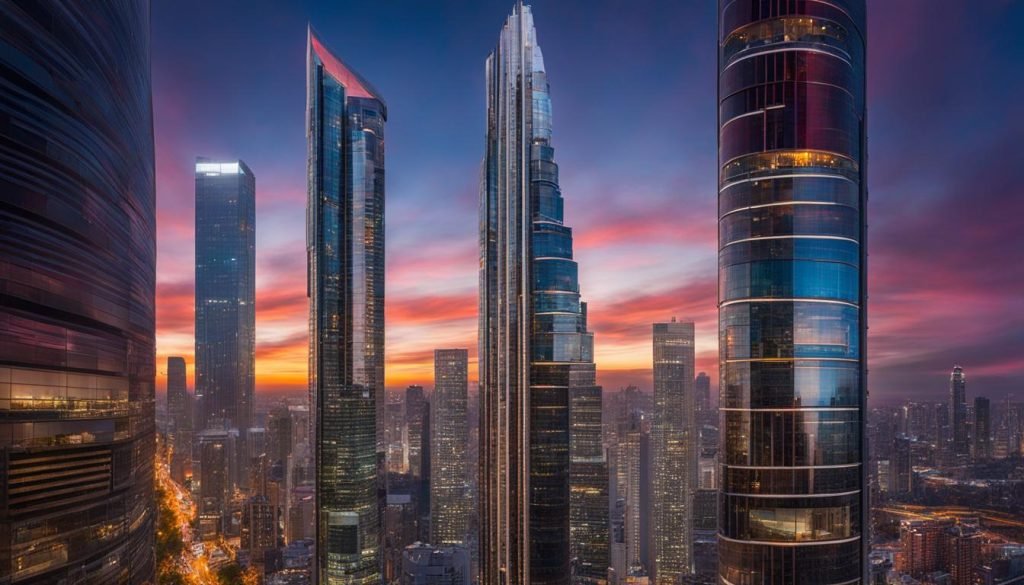
Tips for Overcoming Challenges in Architectural Photography
Architectural photography presents unique challenges that can sometimes hinder your ability to capture the perfect shot. However, with proper planning and preparation, you can overcome these obstacles and create stunning images that showcase the beauty of buildings and structures. Here are some valuable tips to help you navigate the challenges of architectural photography:
1. Perspective Distortion:
When photographing tall buildings or structures, perspective distortion can be a common issue. To mitigate this, position yourself further away from the subject and use a longer focal length. This will help maintain the vertical lines and proportions of the architecture, resulting in more accurate and appealing images.
2. Managing Harsh Lighting Conditions:
Excessive contrast caused by harsh lighting can make it challenging to capture well-exposed architectural photos. Consider shooting during the golden hour, when the soft warm light creates a pleasing atmosphere and minimizes harsh shadows. If shooting during midday or in direct sunlight, use a polarizing filter to reduce glare and control reflections.
3. Dealing with Crowds or Limited Access:
In busy tourist areas or private properties, it may be difficult to find a clear view or gain access to the desired angles for your shots. To overcome this, plan your shoot during off-peak hours or seek permission in advance to ensure you have the necessary access. Patience is key, so be prepared to wait for the right moment when the crowd clears or access becomes available.
Remember, architectural photography is a journey of exploration and creativity. Embrace the challenges as opportunities to learn and grow as a photographer. With practice, persistence, and the right techniques, you can capture breathtaking images that truly reflect the beauty of architecture.
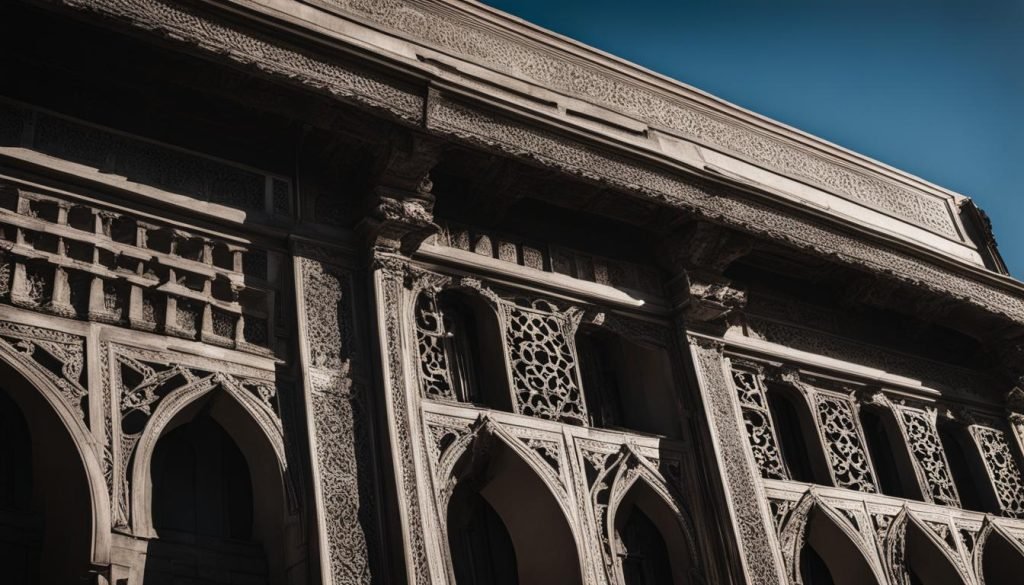
Now that you’re equipped with these tips, it’s time to grab your camera and face the challenges head-on. Overcome perspective distortion, manage harsh lighting conditions, and find creative ways to deal with crowds or limited access. By applying these strategies, you’ll be well on your way to mastering the art of architectural photography and capturing images that leave a lasting impression.
Conclusion
Congratulations on completing this comprehensive guide to architectural photography! Armed with these valuable tips, you are well on your way to mastering the art of capturing stunning images of buildings and structures.
Remember, practice makes perfect, so make sure to get out there and shoot regularly. Embrace your creativity and experiment with different techniques, angles, and compositions to bring out the best in architectural photography.
Don’t forget to pay attention to lighting conditions and invest in the right equipment to ensure the highest quality results. And when it comes to post-processing, use software like Adobe Lightroom or Photoshop to enhance your images and bring out their full potential.
So go out there, unleash your artistic vision, and let architecture be your muse. With these architectural photography tips in your arsenal, you’re ready to capture exceptional images that showcase the beauty and grandeur of the built environment.
FAQ
What is architectural photography?
Architectural photography is a genre of photography that involves capturing the beauty and intricacy of buildings and structures.
What techniques are important in architectural photography?
Mastering composition, using appropriate lighting, selecting the right equipment, and optimizing camera settings are essential techniques in architectural photography.
How can I improve the composition of my architectural photographs?
Consider elements such as lines, shapes, patterns, and symmetry. Experiment with angles and perspectives, and strive for a clean and minimalistic composition.
How can I make the most of lighting in architectural photography?
Shoot during the golden hour for soft and warm light. Use artificial lighting techniques like light painting or bracketing.
What equipment do I need for architectural photography?
Sturdy tripod, wide-angle lens, and filters for controlling reflections and enhancing color saturation.
What camera settings should I use for architectural photography?
Shoot in RAW format for maximum control. Use a low ISO for minimal noise and a smaller aperture for maximum depth of field. Experiment with different shutter speeds.
How can I explore different angles in architectural photography?
Move around, change your vantage point, and capture unique viewpoints. Try shooting from low angles for height emphasis or from elevated positions for different perspectives.
How can I enhance my architectural photographs through post-processing?
Use software like Adobe Lightroom or Photoshop to fine-tune exposure, color balance, and sharpness. Correct perspective distortion and remove unwanted elements. Experiment with different styles and filters.
How can I unleash my creativity in architectural photography?
Capture abstract details, play with reflections or shadows, and incorporate people for scale and storytelling. Visit different locations to showcase diverse architectural styles. Think outside the box and capture unique perspectives.
What challenges might I face in architectural photography, and how can I overcome them?
Issues like perspective distortion, harsh lighting conditions, crowds, or limited access can be overcome by planning ahead and being prepared. Carry essential gear like a polarizing filter, lens hood, and a remote shutter release. Be patient and practice.





